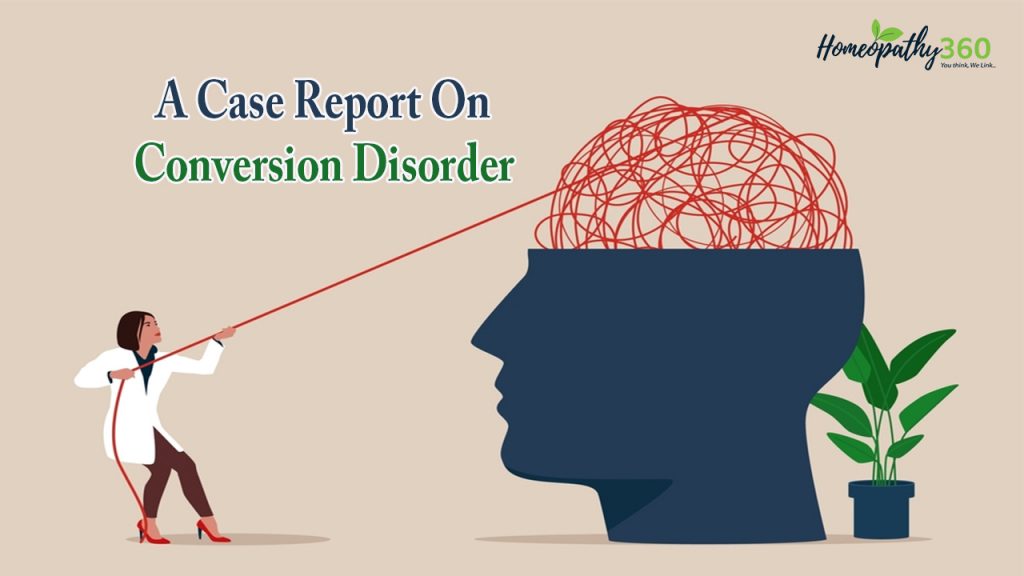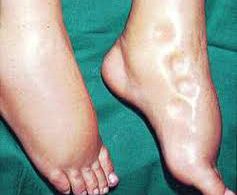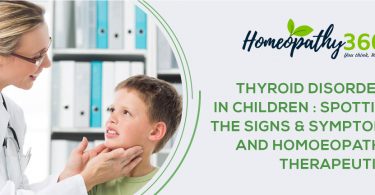
A psychological disorder in which a motivational conflict has been converted into physical symptoms; the person appears to have various ailments, but these ailments have no physical basis.
The common theme shared by conversion disorders is a partial or complete loss of the normal integration between memories of the past, awareness of identity and immediate sensation , and control of bodily movements.
The diagnosis usually requires assessment in secondary care, where it is found in approximately 5% of referrals to neurology clinics. The incidence of individual persistent conversion symptoms is estimated to be 2-5/100,000 per year.
In the past, conversion disorder was thought to be an entirely psychological disorder, where psychological problems get “converted” Into physical symptoms. Today, conversion disorder is recognized as its own distinct disorder. Psychological issues (for example, trauma, personal conflicts, life stressors) are often seen in patients with conversion disorder symptoms, but are not always present in all patients.
Age- a peak onset in the mid- to -late 30s .
A case of conversion Disorder:
A 18 years female patient was admitted to the IPD ( in patient department) of Swasthya Kalyan Homoeopathic Medical College and Research Centre, Jaipur on 11th January 2020 by her attendant with the following symptoms and whole case was given by her attendant.
Present Illness
Sudden unconscious at 1:30 pm at hospital
- Duration- few seconds to few minutes
- Temporal headache
- No nausea, no vomiting, no vertigo
- Mild trembling in right upper limb.
- Blinking movement in bilateral eyelids.
No tongue bite, no involuntary passage of urine and stool.
History of presenting illness
The patient complaint has started 3 years back. No acute stressor identified but she was attached with a guy and that was one sided affection. Constant thinking about that guy.
Patient has similar complaints of frequent episode of faintness since 2017 for which she was under irregular treatment.
- First episode had occurred in 31st January, 2017 .
- Onset- sudden
- Duration- few seconds to few minutes and progressive
- Sudden faintness
- Trembling in upper right limb
- Blinking movement of bilateral eyelids
- Feeling of coldness in bilateral lower limb
- Headache
- Palpitations
- Aggravation on thinking about her complaint
- Aggravation in company
Consulted with many doctors but got no relief and all the investigations were normal.
Family history
Mother had suffered from diabetes mellitus and father from hypertension.
Physical general
Perspiration was scanty
Mental generals
Patient was reserved by nature. Her anger was suppressed. She does not like to share her personal things and she likes music.
Mental state examination
- Appearance and behaviour- tall and healthy ( Obese )
- Smiling face , had conversation without hesitation.
- Motor activity- Poor
- Speech – Coherent
- Affect – Emotional, comfortable interaction
- Thought process – Not clear
- Perception disturbance- No
- Cognition- Good
Discussion and conclusion
It was a case diagnosed with conversion disorder and the treatment of single episode of disease is presented here. The patient was under homoeopathic treatment only from the day of admission to the in patient department. She was admitted with conversion symptoms. She was not on regular medication before this.
On the day of admission, the more prominent symptoms of the patient were used for repertorization.
Ignatia amara 200 was selected after referring material medica. Ignatia amara was selected because it seemed to cover the symptoms of the patient like reserved nature, doesn’t like to share personal things, like music , anger suppressed, hysterical fainting, contradiction aggravation and mental exertion aggravation.
Repertorization sheet
Prescription
Rx
IGNATIA AMARA 200/ 1 DOSE/ STAT
The prescribed medicine was repeated after 30 minutes.
Follow ups
| Date of prescription | Medicine prescribed | Changes in symptoms |
| 11/ January/20202:58 pm | Ignatia amara 200 | Patient respondEye movementVitals normal |
| 11/January/20203:15 pm | Ignatia amara 200 | Patient become consciousTook deep breathTrembling in lower extremityEye movementSit with support and drink waterCame outside and with her friends but falls again |
| 11/January/20204:19 pm | Ignatia amara 200 | Become conscious again Patient interact with smiling faceVitals normal |
| 11/January/20204:50 pmMet her relative and collapsed again | Ignatia amara 1m | Patient was conscious and all vital were normal |
| 2/March / 2020 | Ignatia amara 1m | Patient was in conscious state All vitals were normal |
Dr Deepika Shishodia(1), Dr Swati Upadhyay(2), Dr Chandrabhan Sharma, MD (Hom) (3).
Designation & Institute:
PGR MD 2 (Hom) Psychiatry, 2. PGR MD 2 (Hom) Psychiatry, 3. Assistant Professor in Department of Psychiatry, Swasthya Kalyan Homoeopathic Medical College & Research Centre, Jaipur.





